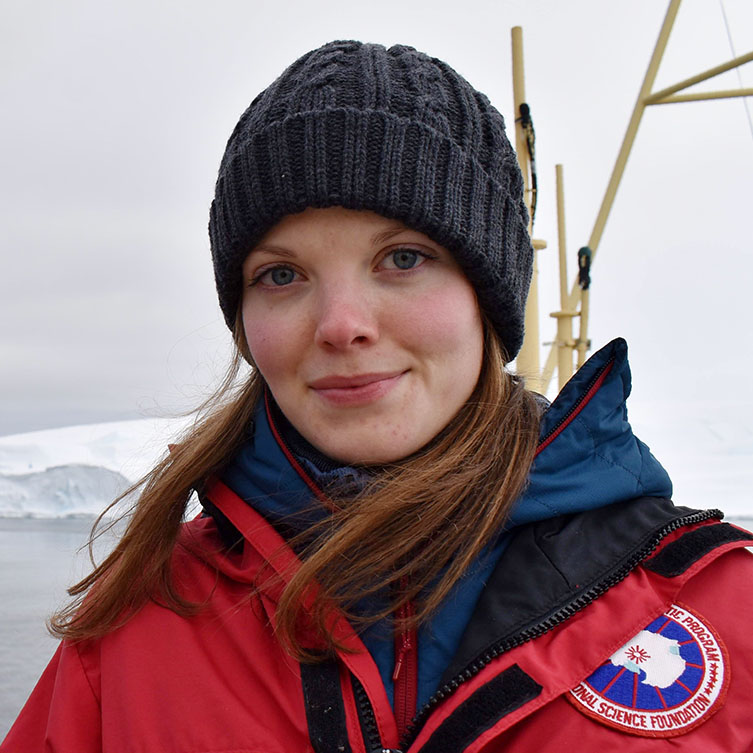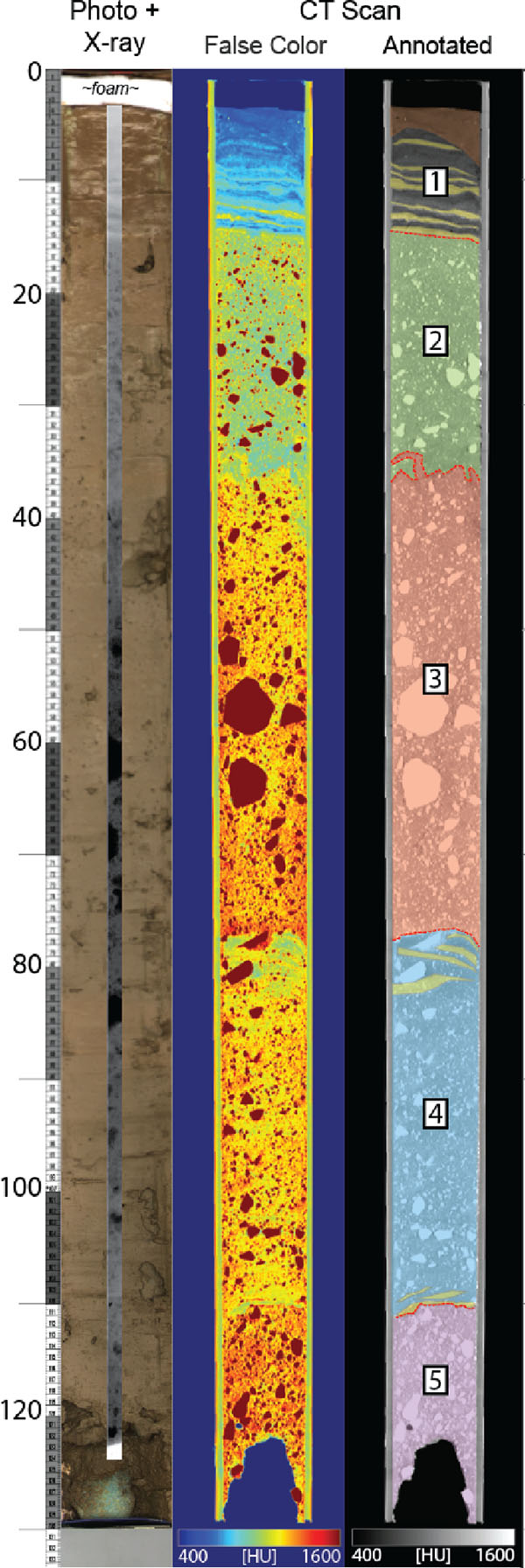Award Will Fund CT Scans of Cores Collected Near Thwaites Glacier

Fifth-year University of Houston Ph.D. candidate Rachel Clark received a specialized award from the Quaternary Geology and Geomorphology Division of the Geological Society of America. The Denton, Andrews, Porter Glacial Geology Award is given to students whose research targets glacial geology, including glaciology, glacial geomorphology, glacial chronology, or a related field, such as paleoclimatology or climate change.

Clark is working on marine sediment cores collected near Thwaites Glacier in West Antarctica as part of the Thwaites Glacier Offshore Research Project. She is advised by Dr. Julia Wellner, an associate professor of stratigraphy, sedimentology, and glacial processes, in the Department of Earth and Atmospheric Sciences.
Satellite data indicate this glacier is rapidly losing ice mass and will have a significant impact on the stability of the entire ice sheet. Clark is planning to use the sediment record near this glacier to understand when this trend initiated in the 20th century. Her analyses include downcore petrophysical measurements, grain size distribution, and geochronological dating using 210Pb and 14C radioisotopes.
The research funding from the GSA Quaternary Geology and Geomorphology Division will be used to obtain computed tomography (CT) scans of the recently collected sediment cores. The CT scans will be collected at the Oregon State University Carlson College of Veterinary Medicine, in association with the OSU Marine and Geology Repository.
These CT scans, which are typically used for medical investigations, reveal significant detail about the sediment structures that are not as clear when looking at the core in person. The image provided shows a preliminary CT scan for one core collected near Thwaites Glacier. The scan shows four distinct gravel-rich packages and a fine-grained laminated package near the core top. The sharp lithological change between the gravel-rich packages and the fine-grained laminated package likely records when the ice retreated away from this core site.
Clark will focus on a suite of CT scans from cores collected near Thwaites Glacier to investigate the recent glacial history and reveal when this glacier began its current episode of retreat. Knowing when Thwaites Glacier started to lose ice mass may also help reveal the atmospheric and oceanographic mechanisms that caused this episode of retreat. She plans to return to Antarctica for another field season in January to March of 2022.
Figure Caption: Left column shows a digital photo of a marine sediment core that is 1.3 meters long. Middle column is a CT scan of the core, revealing significant internal detail that is annotated in the column on the far right. There are four gravel-rich packages and one fine-grained package at the top of the core.